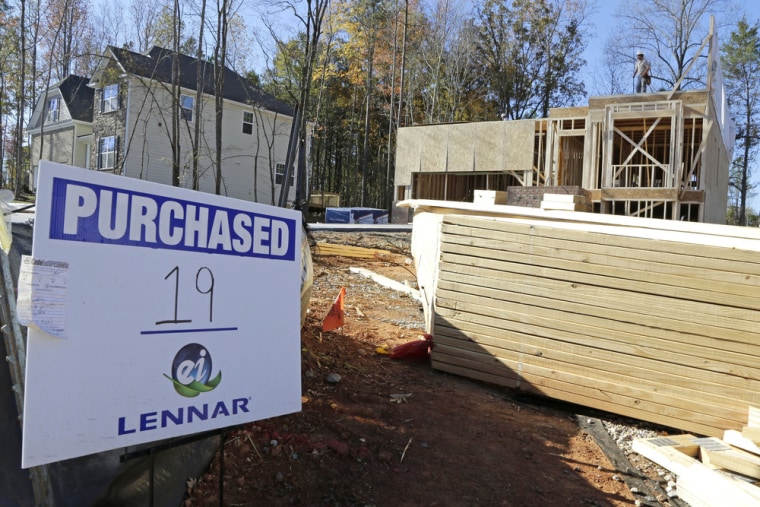
It was the sharpest jump in more than three decades, but housing watchers are already poking holes in the new home sales numbers. After delays due to the government shutdown, data for both September and October were released together, in addition to a large downward revision for August. Follow the numbers, and the gains are not quite what the headline seems.
Contracts signed to buy newly built homes jumped 25.4 percent in October month to month, after falling 6.6 percent in September from August. The seasonally adjusted annual rate went from an originally reported 421,000 units in August, which was revised down to 379,000 units, and to 354,000 units in September. The number for September was a 10 percent drop from September of 2012. It then rose to 444,000 units in October. There is a nearly 20 percent margin of error on all these numbers.
"The October 'preliminary' report released this morning, along with the terrible August and September data, is the outlier and will be revised lower next month in line with the new trend lower that began in July," noted housing analyst Mark Hanson.
August sales estimates were revised down by 15 percent on an unadjusted basis and September sales dropped from there.
"Both the September and October new home sales data were released together and averaged 399,000 annualized versus the estimate of 424,000 and compares with the average year-to-date of 422,000," said Peter Boockvar, chief market analyst of economic advisory firm The Lindsey Group. "The weakness seen in July through September was clearly in response to the rise in rates and the almost 25-basis-point decrease in mortgage rates in October seemed to have brought out buyers that were previously on the fence."
Related: Grandparents, have your spending habits for the grandkids changed?
Builders say it wasn't just the falling rates, but the end of the government shutdown.
"I think it built up some pent up demand," said Alan Laing, CEO of Pennsylvania-based Orleans Homes. "We saw immediately after the resolution, traffic and sales got better in the second half of October."
The short drop in mortgage rates may not, in fact, have had as much of an impact on sales as some think. Lower prices may have. The median price of a new home sold in October was $245,200, a drop of 1 percent from a year ago. While that may not seem like a lot, it is the lowest monthly median since November of 2012. Prices have been going up dramatically on an annual basis for both the builders and for existing home sales.
The mortgage rate card can actually be played both ways. Steven Alloy, president of Virginia-based Stanley Martin Homes, said rising rates will drive more home sales, not less.
"If you are somebody considering buying a house, one of your great fears is that rates go up, so if they start to move, people will start to believe that they will keep moving, and as soon as they believe they are going keep moving they are going to come out in droves," he said.
Mortgage rates have jumped dramatically in just the last week on positive economic data. The average rate on the 30-year fixed conforming loan hit 4.51 percent last week, according to the Mortgage Bankers Association, but are already higher today. Should the monthly jobs report released on Friday be better than expected, interest rates will surge ever higher.
—By CNBC's Diana Olick. Follow her on Twitter @Diana_Olick.
Questions? Comments? facebook.com/DianaOlickCNBC
Time to lock and load? Mortgage rates on the rise again
Looking to move? The Census has an app for that
Robert Shiller on housing: Don't trust momentum